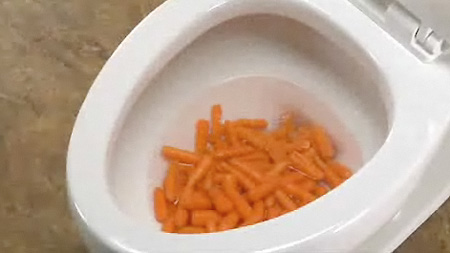Is it Suitable to Dispose of Food Down the Toilet?
Click HereWhat are your opinions regarding What Can Happen If You Flush Food Down the Toilet??

Introduction
Lots of people are commonly confronted with the predicament of what to do with food waste, specifically when it concerns leftovers or scraps. One typical concern that emerges is whether it's alright to purge food down the bathroom. In this short article, we'll explore the reasons people may think about purging food, the repercussions of doing so, and alternate methods for correct disposal.
Reasons why individuals may consider flushing food
Absence of understanding
Some individuals might not understand the prospective harm brought on by flushing food down the bathroom. They might wrongly think that it's a harmless technique.
Convenience
Purging food down the bathroom might look like a fast and very easy remedy to disposing of unwanted scraps, especially when there's no neighboring trash bin readily available.
Idleness
In some cases, individuals may simply pick to flush food out of sheer idleness, without thinking about the consequences of their actions.
Repercussions of flushing food down the toilet
Ecological influence
Food waste that ends up in rivers can contribute to contamination and injury water ecosystems. Furthermore, the water used to flush food can stress water resources.
Pipes problems
Flushing food can lead to clogged up pipes and drains, causing expensive pipes repairs and inconveniences.
Kinds of food that must not be flushed
Coarse foods
Foods with coarse appearances such as celery or corn husks can get tangled in pipes and cause blockages.
Starchy foods
Starchy foods like pasta and rice can take in water and swell, resulting in clogs in pipes.
Oils and fats
Greasy foods like bacon or food preparation oils need to never be purged down the bathroom as they can strengthen and trigger obstructions.
Appropriate disposal methods for food waste
Making use of a waste disposal unit
For homes outfitted with garbage disposals, food scraps can be ground up and flushed with the plumbing system. However, not all foods are suitable for disposal in this fashion.
Recycling
Specific food product packaging products can be reused, minimizing waste and lessening environmental effect.
Composting
Composting is an environment-friendly way to take care of food waste. Organic products can be composted and made use of to improve dirt for horticulture.
The relevance of appropriate waste monitoring
Lowering environmental injury
Correct waste administration practices, such as composting and recycling, assistance lessen pollution and protect natural deposits for future generations.
Protecting pipes systems
By avoiding the method of flushing food down the bathroom, homeowners can protect against expensive pipes repair services and keep the stability of their plumbing systems.
Final thought
To conclude, while it may be alluring to flush food down the toilet for ease, it is necessary to understand the potential consequences of this action. By adopting appropriate waste administration methods and throwing away food waste responsibly, people can contribute to healthier plumbing systems and a cleaner setting for all.
FLUSH FOOD DOWN THE TOILET?
FLUSHING FOOD CAN CAUSE BLOCKED DRAINS IN YOUR HOME
All of the plumbing fixtures in your home are connected to the same sewer pipe outside of your home. This outdoor sewer pipe is responsible for transporting all the wastewater from your home to the Council sewer mains. Even small pieces of food that go down the kitchen sink can cause problems for your sewer. It should therefore be obvious that flushing larger bits of food, such as meat, risks a clog in either the toilet itself or the sewer pipes. Flushing greasy food is even more problematic because oil coagulates when it cools, coating the interior lining of your pipes.
THE TOILET IS NOT A BIN
Food isn’t the only thing that people shouldn’t be flushing down the toilet. People use the toilet to dispose of all kinds of things such as tampons, makeup wipes, dental floss, kitty litter and even underwear. Water goes to great lengths to educate residents about the high costs and stress placed on wastewater treatment systems simply from people flushing the wrong stuff down the toilet. It costs taxpayers millions of dollars each year, and homeowners thousands in blocked drain repairs.
FLUSHING FOOD IS A WASTE OF WATER
Flushing food is a waste of our most precious resource - water. In June this year Level 1 water restrictions were introduced to protect water supply from drought conditions. Much of New South Wales continues to be affected by prolonged drought with recent figures revealing up to 97 per cent of the state remains in drought. Depending on whether you have a single or dual flush toilet, every single flush uses between five and 11 litres of water. In the current climate this is a huge amount of water to be wasting on flushing food that should be placed in the bin (or better yet, the compost).
https://www.jabplumbingsolutions.com.au/blog/can-you-flush-food-down-the-toilet

I found that article about Is it safe to flush food (especially rice) down the toilet? when doing a search on the internet. For those who appreciated our article plz be sure to share it. I love your readership.
Book Appointment Now